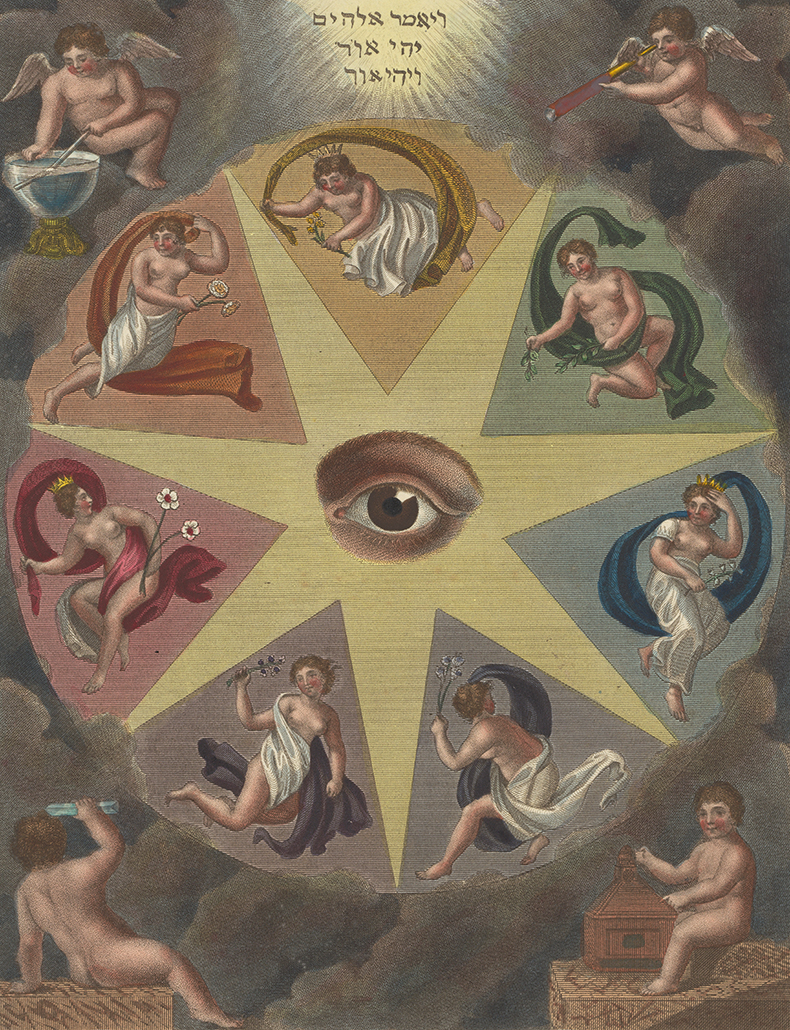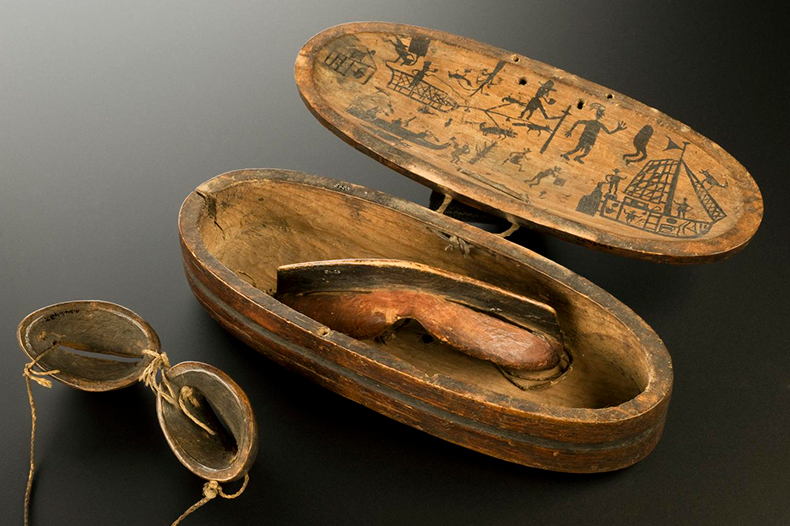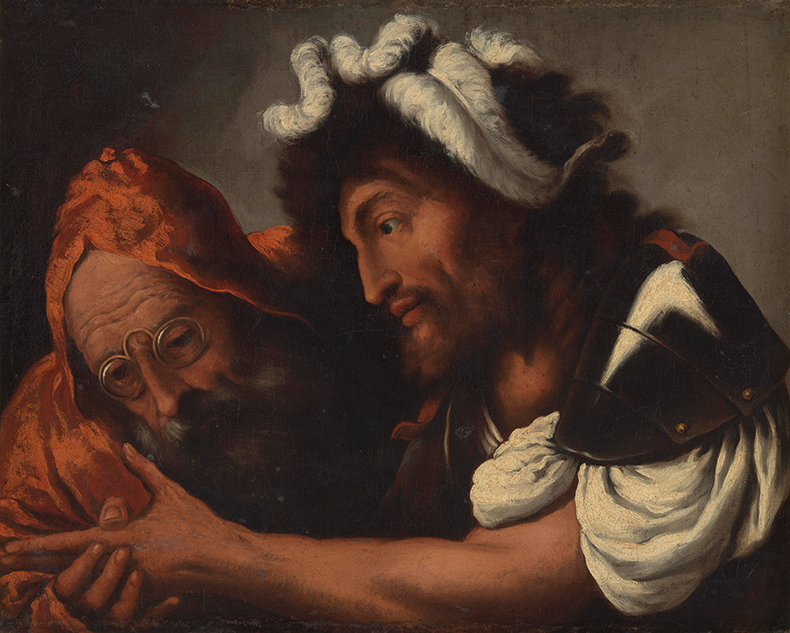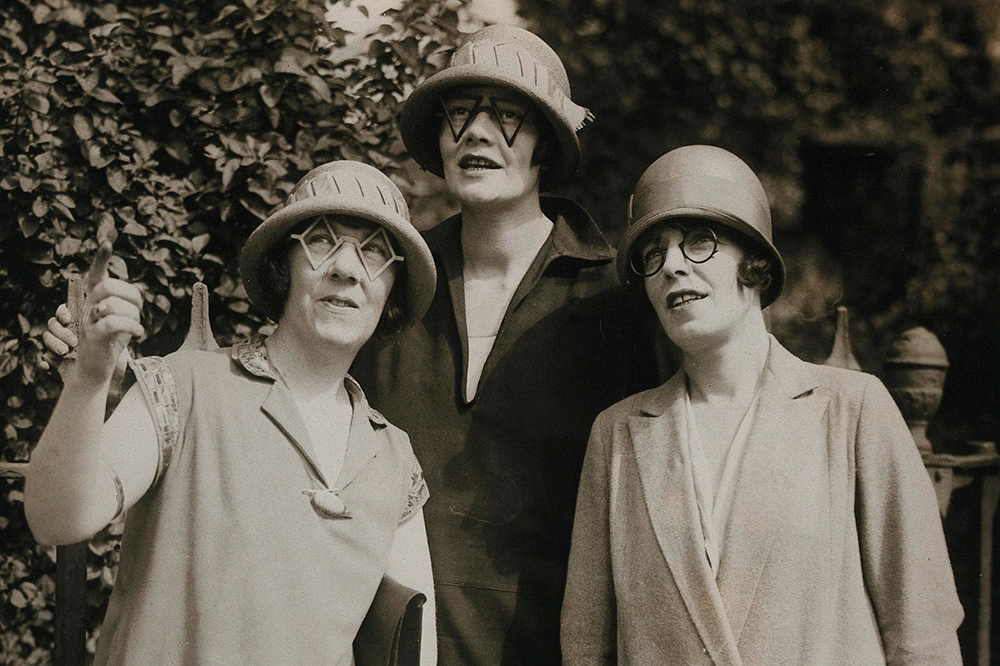From the December 2022 issue of Apollo. Preview and subscribe here.
The eye is a phenomenal organ: the optic nerve has around 800,000 fibres (the cochlear nerve of the ear has only around 25,000), which transmit an overload of information to the brain. In each eye are around 120 million rods, which enable us to see in different levels of lightness and darkness, as well as seven million cones, which allow us to distinguish around one million combinations of colour. Sight can distinguish objects at a much greater distance than hearing, smell, touch or taste; with its privileged relationship to the mind, vision was often referred to as the ‘noblest’ of the senses.
Through 144 objects – from an ancient Egyptian protective amulet to Ewa Nowak’s elegant anti-surveillance mask; from a crystal reading stone to a VR headset – this thought-provoking exhibition explores the predominance of the eye. It also questions our assumptions about the centrality of vision. The 19th-century idea of 20:20 vision, represented by the Snellen eye chart, invented in 1862, is shown to be an arbitrary standard. According to NHS figures, more than 2 million people in the UK have sight loss, and 69 per cent wear corrective eyewear or have had laser surgery. Our indoor and screen-based lifestyle is only making our vision worse.
An eye in a star (representation of the optical system) (1820), John Chapman after A.D. M’Quin. Wellcome Collection, London

‘In Plain Sight’ charts the growing understanding of the mechanics of the eye and assembles numerous cures and prosthetics, many from the Wellcome’s extensive optics collection, designed to correct or protect the fragility of sight, or serve as fashion or status symbols. In the Middle Ages it was thought that opal stones healed blindness and that green cataracts could be cured with herbal purging drinks. The patron saint of good eyesight, Saint Odilia, also protected against rat infestations. Eyeglasses were invented in Italy in the second half of the 13th century and widely prescribed by the 18th century. Bifocals were an innovation of Benjamin Franklin and Dr Adolf Müller-Welt applied for a patent for his blown glass contact lens in 1928; by the 1950s they were made from plastic and ubiquitous.
In 1920, William Bates published The Bates Method for Better Eyesight Without Glasses (exercises from which are reproduced in the exhibition). The book saw him thrown out of the American Medical Association for promoting fraudulent cures, but is nevertheless still in print. As a teenager, Aldous Huxley lost his sight for a year and a half, as a result of inflammation of the corneas (punctate keratitis), but later regained limited vision and wore thick corrective lenses. In late 1930s Hollywood he met Margaret Corbett, one of Bates’s disciples, and wrote The Art of Seeing (1942) to tout his supposed miracle cure. Other optical devices on show, such as artist Alfons Schilling’s spinning Vision Machines (1980s) and designer Dominic Wilcox’s One Foot Taller Periscope Glasses (2019), open Huxley’s doors of perception to see the world awry.
Wooden snow goggles (1801–1900), unknown maker, North America. Wellcome Collection/Science Museum Group

Ancient Greek thinkers believed that light rays emanated from the eyes as if from a lighthouse. The exhibition traces how we now know the reverse to be true: we see the reflection of light rays bouncing off surfaces and know that white light is made up of a spectrum of colours. We learn to see, and at birth an infant does so mostly in monochrome as the cones at the back of the eye that enable colour vision are not yet matured. (John Ruskin proposed that artists should replicate a child-like ‘innocence of the eye’, imagining they were blind and ‘suddenly gifted with sight’.) Seeing is interpretation, to which we bring the beholder’s share, making sense of the world through the filter of what we know and by filling in the blanks. No one else sees the world quite like us.
We all have a blind spot, where the optic nerve meets the retina, and the reality of (colour) blindness is used here to question our ocular certitudes. In Greek myth, blindness is interpreted as both a punishment and, in the case of the seer, as having an intimate relation to the sacred. In Christianity the healing of blindness became a metaphor for salvation. Enlightenment philosophers, such as John Locke and Voltaire, were fascinated by the intellectual problems thrown up by the new science of cataract operations (the art of ‘couching’, whereby the cornea was sliced open so that the clouded lens could be removed). Indeed, the blind man restored to sight became a paradigmatic figure in Enlightenment thinking.
A Fortune Teller Reading the Palm of a Soldier (17th century), Pietro Della Vecchia. Wellcome Collection

The most effective artistic contributions to the exhibition explore the inherent bias of vision. It is no mistake that the personification of justice is depicted wearing a blindfold, to imply her better judgment, and ever since Moses and the Golden Calf, there has been an iconoclastic tradition that mistrusts ocular distractions and the fetish for images. As the 18th-century empiricists proved, all our senses work together, and several works by blind or partially sighted artists present a series of non-visual perspectives on the world where other senses come to prominence. With his four-metre Long Cane (2022), Carmen Papalia expands his cartographic field; for the film Mobility Device (2013), he employed a marching band to help guide him across the city.
The exhibition is a masterclass in inclusivity, with haptic displays, clear routes and audio guides. Nevertheless, as I tried to enjoy a journey into ‘whole body seeing’, I learned that it is impossible to wear a VR headset while also wearing glasses, and without them the experience was a dizzying blur, like immersing my face in an acoustic bucket; perhaps appropriate for a film about sight loss and an exhibition about being open to other ways of seeing. As the blind author John Hull explains in Astrea’s virtual-reality film Notes on Blindness (2016): ‘A blind person is simply someone in whom the specialist function of sight is now devolved upon the whole body, and no longer specialised
in a particular organ.’
‘In Plain Sight’ is at the Wellcome Collection, London, until 12 February 2023.
From the December 2022 issue of Apollo. Preview and subscribe here.



